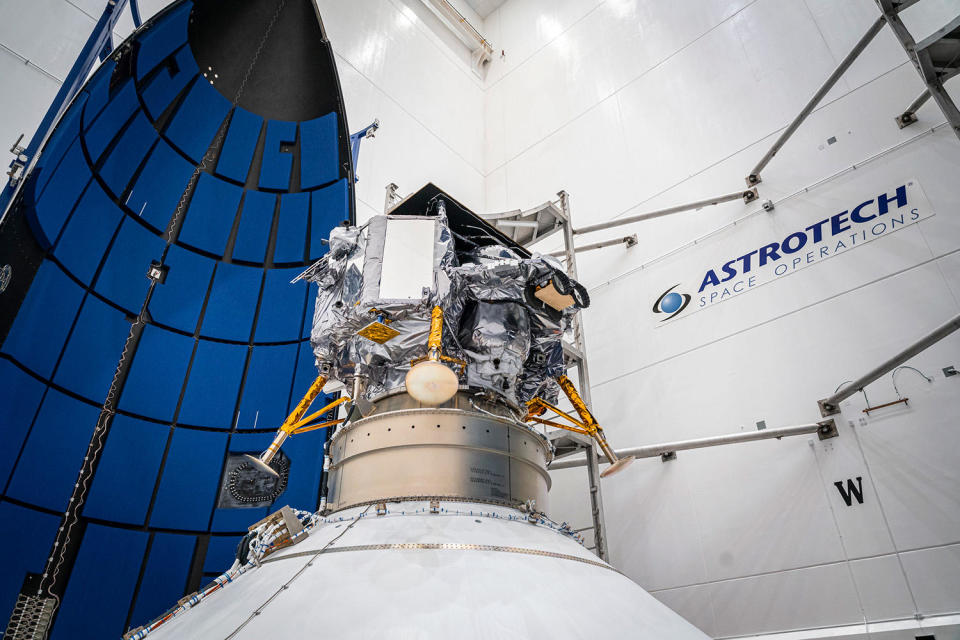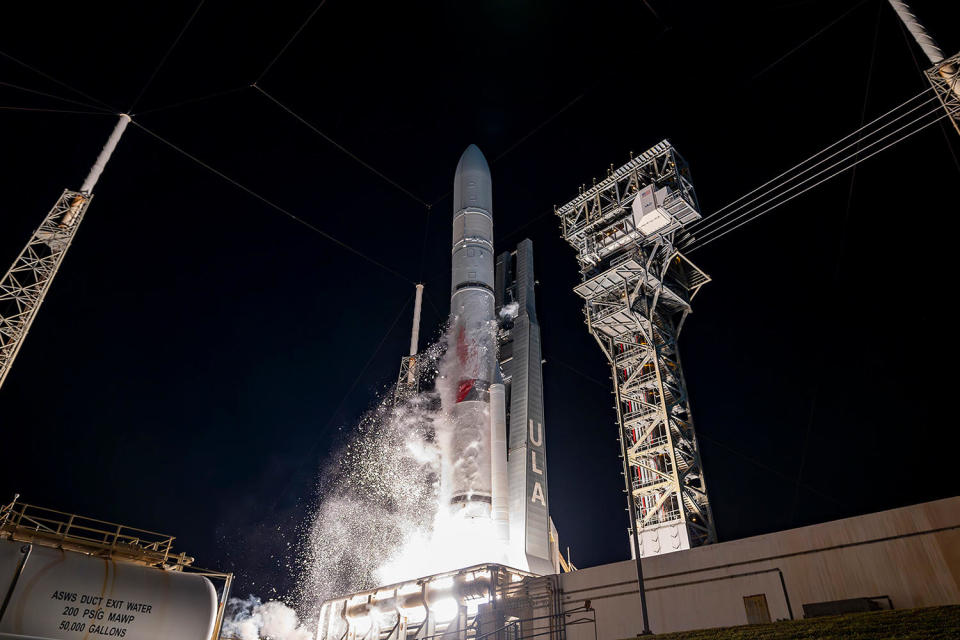After a successful launch early Monday, engineers checking out the robotic Peregrine moon lander ran into problems keeping the spacecraft properly oriented, a potentially crippling issue for the first U.S. lunar lander since the Apollo program more than 50 years ago.
In a brief statement, spacecraft builder Astrobotic said initial checkout and activation of Peregrine’s systems following separation from United Launch Alliance’s new Vulcan rocket went well.
“Astrobotic-built avionics systems, including the primary command and data handling unit, as well as the thermal, propulsion and power controllers, all powered on and performed as expected,” the Pittsburgh-based company reported.
“Unfortunately, an anomaly occurred, which prevented Astrobotic from achieving a stable sun-pointing orientation. The team is responding in real time as the situation unfolds and will be providing updates as data is obtained and analyzed.”
In a second update, the company said engineers believe the likely cause of the sun-pointing issue is “a propulsion anomaly that, if proven true, threatens the ability of the spacecraft to soft land on the moon.”
In addition, Astrobotic said, “the spacecraft battery is reaching operationally low levels.” Commands were sent to re-orient the Peregrine to improve solar power generation but the spacecraft then entered a region of its orbit where communications were interrupted and the result of the maneuver was not immediately known.

The Peregrine lander is the fist American spacecraft bound for the surface of the moon in more than 50 years and only the third developed as a non-government commercial venture. Two previous commercial attempts, one launched by an Israeli group and the other by a Japanese company, crash landed in 2019 and 2023 respectively.
“Flying to the surface of the moon and operating lunar missions is a very, very challenging business,” Astrobotic CEO John Thornton said before launch. “Only about half of those missions have been successful, and most of those have been funded by superpowers. … So that’s a really, really big challenge, and we recognize that. Eyes wide open.
“In the event that we have a bad day somewhere along the mission, we’re going to be gathering all of the data that we received up to that point, and we’re going to learn from it … and we’re going to get smarter and we’re going to be ready for the next one.”

Carrying science experiments, a time capsule, and human “cremains”
Peregrine is the first in a series of private-sector moon missions funded under a NASA program — the Commercial Lunar Payload Services program or CLPS — intended to spur development of lunar transportation and surface delivery services for hire.
NASA paid Astrobotic $108 million to deliver five sophisticated science instruments and a navigation sensor to the moon.
Twenty experiments and payloads are aboard in all, ranging from research instruments to artwork, a time capsule, a sliver of Mount Everest and even human “cremains” from two companies that arrange to send small portions of a loved one’s ashes to space.
Peregrine rode into an elliptical Earth orbit early Monday in the maiden flight of United Launch Alliance’s new Vulcan rocket. ULA plans to replace its workhorse Atlas 5 and Delta 4 boosters with the more powerful, less expensive Vulcan.
Monday’s launch at 2:18 a.m. EST went off without a hitch and Peregrine was released to fly on its own about 50 minutes later. A few minutes after that, Astrobotic reported engineers were receiving telemetry from the lander, indicating the spacecraft had come through launch in good shape.
The flight plan calls for Peregrine to remain in its highly elliptical Earth orbit for initial checkout and tests before firing its own thrusters to head for the moon. The launching was timed to set up a daylight landing near a volcanic feature known as the Gruithuisen Domes on Feb. 23.
Meet Taylor Tomlinson, late-night comedy’s newest host
How artificial intelligence is revamping customer call centers
“Have to be prepared” to defeat Trump at ballot box despite Supreme Court case, Liz Cheney says
Signup bonus from


